The conspicuous tufts of feathers with which the legs of the Eriocnemides are clothed is a feature both novel and peculiar; and as it is not to be found in any other group of birds, they are thereby rendered especially singular. In some these powder-puff-like decorations are white, in others brown and white, and in one jet black. All the species are confined to that portion of the Andes which is bounded on the north by New Granada, and on the south by Bolivia.
It is not to be supposed that the minor distinctive characters which exist among the many species of this group should have passed unnoticed by ornithologists; on the contrary, they have attracted the notice of more than one writer, and the birds which were all formerly included in the genus Eriopus or Eriocnemis have received the subgeneric titles of Engyete, Threptria, Phemonoë, Aline, Luciania, Mosqueria, Derbyomia, &c.,—a tolerable division for the genus first established by me in 1847, under the name of Hriopus. I shall now give my own views on the subject, and point out those which I consider to be natural divisions. The first, then, is the well-known E. cupreiventris, with which I associate the E. Isaacsoni, the E. Lucianiani the E. Mosquera. In all these the sexes are alike in colour. The next division comprises E. vestita and E. nigrivestis, as they both have a brilliant patch of feathers on the throat, and the lower part of the back and the upper tail-coverts exceedingly luminous; and their females are somewhat different and less brilliant in colour. The E. Godini and E. D’Orbigny: form another little section; but we really know so little respecting these species, that nothing can be said with certainty as to their females. The black-puffed E. Derbiana stands alone, and a rare and very beautiful bird it is. The E. Alinæ is distinguished from all the rest by the glittering green of its face and under-surface; it is by far the smallest species of the genus, while it has the largest puffs; and the female, although bearing a general resemblance to the male, is far less brilliant. The members of the next section are very sombre in their colouring, as will be seen on reference to the plates on which they are represented; they are E. squamata, E. lugens, and E. Aureliæ. Ornithologists may please themselves about adopting generic terms for these minute divisions; but, for myself, I have kept them all under that of Eriocnemis, and still feel inclined to do so. They all possess the important character of the puff leg, and they are remarkably alike as to the amount of this peculiar ornamentation.
Eriocnemis cupreiventris
Habitat: The Andes in New Granada
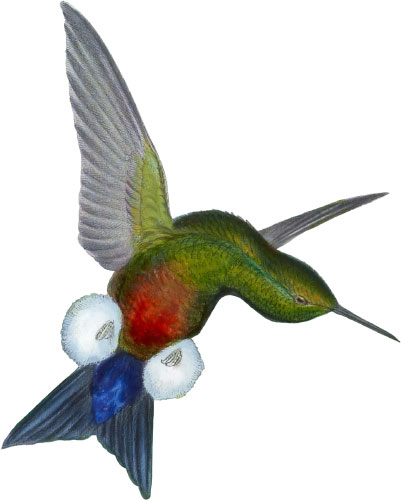 Plate 270
Eriocnemis cupreiventris
Coppery-bellied Puff-leg
Plate 270
Eriocnemis cupreiventris
Coppery-bellied Puff-leg
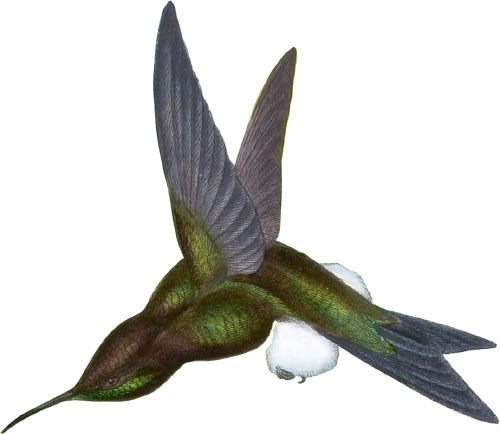 Plate 271
Eriocnemis simplex
Olive-coloured Puff-leg
Plate 271
Eriocnemis simplex
Olive-coloured Puff-leg
I now believe that the bird I have called Eriocnemis simplex is merely a dark variety of the E. cupreiventris. Such varieties do now and then occur with other species of the family; the cause I cannot attempt to explain.
Eriocnemis Isaacsoni
Habitat: New Granada
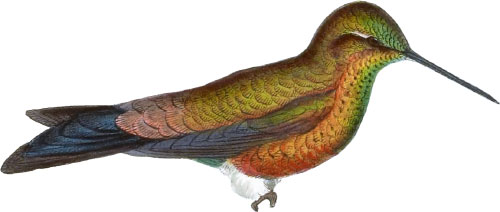 Plate 272
Eriocnemis Isaacsoni
Long-billed Puff-leg
Plate 272
Eriocnemis Isaacsoni
Long-billed Puff-leg
I have never seen any other than the type specimen of this species, which is now in the Derby Museum at Liverpool.
Eriocnemis Luciani
Habitat: Ecuador; western side of Pichincha, at an elevation of 10,000 to 12,000 feet (Jameson)
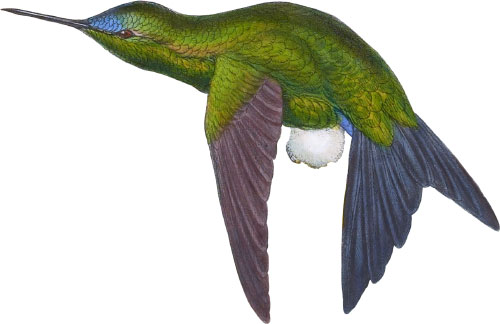 Plate 273
Eriocnemis Luciani
Buquet’s Puff-leg
Plate 273
Eriocnemis Luciani
Buquet’s Puff-leg
Eriocnemis Mosquera
Habitat: The neighbourhood of Pasto in New Granada (Delattre)
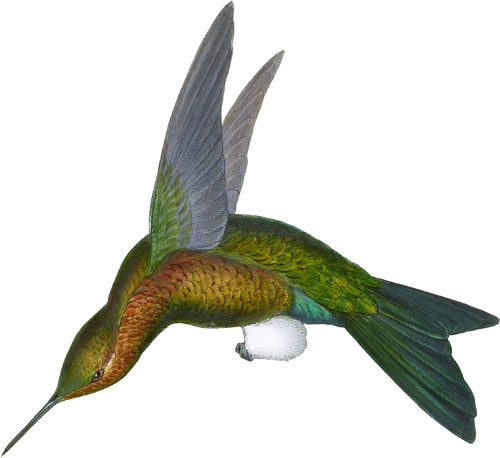 Plate 274
Eriocnemis Mosquera
Mosquera’s Puff-leg
Plate 274
Eriocnemis Mosquera
Mosquera’s Puff-leg
Eriocnemis vestita
Habitat: The Andes of New Granada. Commonly sent from Bogota.
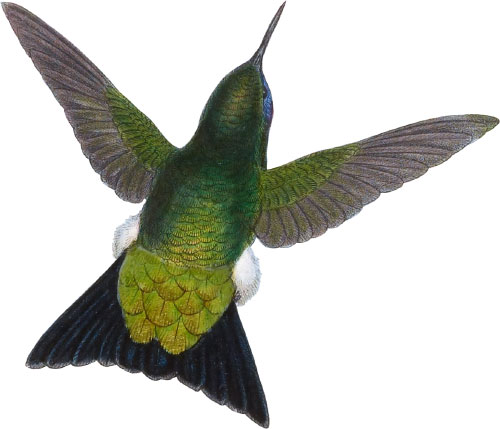 Plate 275
Eriocnemis vestita
Glowing Puff-leg
Plate 275
Eriocnemis vestita
Glowing Puff-leg
Eriocnemis nigrivestis
Habitat: Ecuador, environs of Tumbaro (Bourcier).
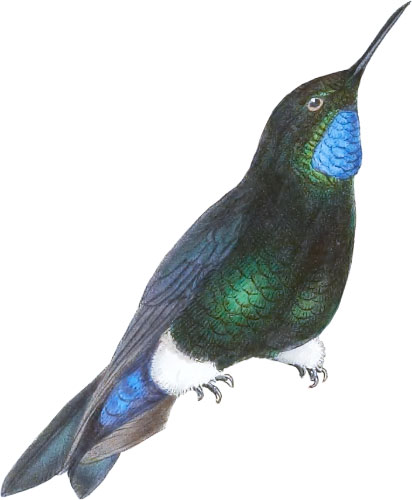 Plate 276
Eriocnemis nigrivestis
Black-bested Puff-leg
Plate 276
Eriocnemis nigrivestis
Black-bested Puff-leg
Eriocnemis Derbiana
Habitat: Volcano of Puracé in New Granada (Delattre)
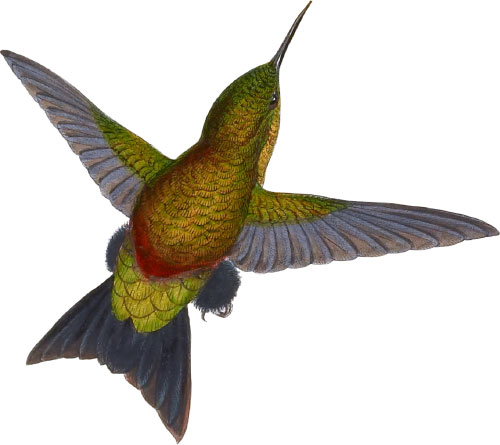 Plate 279
Eriocnemis Derbiana
Derby’s Puff-leg
Plate 279
Eriocnemis Derbiana
Derby’s Puff-leg
Eriocnemis Alinæ
Habitat: The hilly parts of New Granada
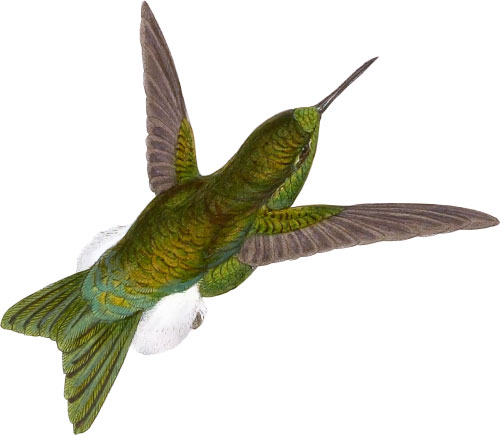 Plate 280
Eriocnemis Alinæ
Metallic Puff-leg
Plate 280
Eriocnemis Alinæ
Metallic Puff-leg
Eriocnemis lugens (Gould)
Habitat: Ecuador; western side of Pichincha (Jameson)
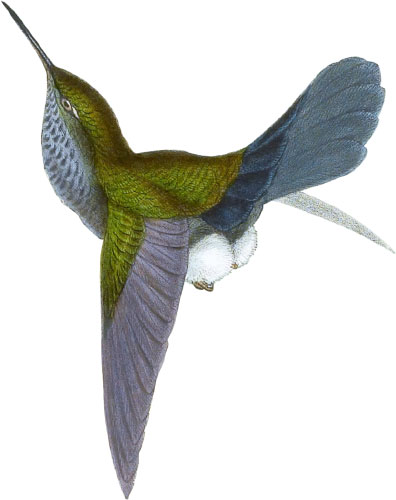 Plate 282
Eriocnemis lugens
Hoary Puff-leg
Plate 282
Eriocnemis lugens
Hoary Puff-leg
It is just possible that this may prove to be the female of E. squamata; for I have received many specimens from Professor Jameson with wholly white puffs, which is the characteristic of E. lugens; while from another locality one has been sent with partly white and partly red puffs: independently of the difference in the colouring of the puffs, the latter birds are larger than the former.
Eriocnemis Aureliæ
Habitat: New Granada and Ecuador
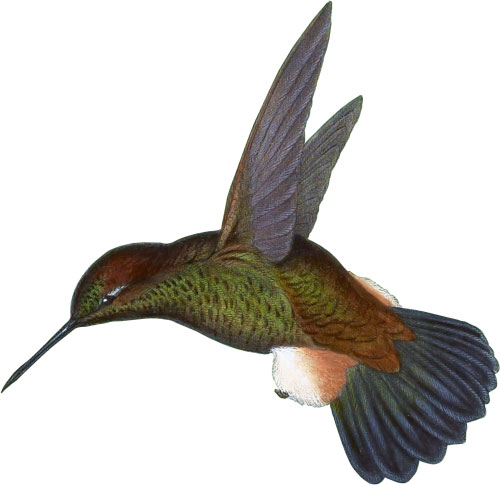 Plate 283
Eriocnemis Aureliæ
Aurelia’s Puff-leg
Plate 283
Eriocnemis Aureliæ
Aurelia’s Puff-leg
Specimens from the Napo differ considerably from those received from Bogota,—a deep coppery hue pervading both the upper and under surface, whereas those parts are green in the Bogotan birds. I have seen specimens which I consider may be females or young of this species with wholly white puffs.
Featuring all 422 illustrated species from John Gould’s A Monograph of the Trochilidæ, or Family of Humming-Birds arranged by color.